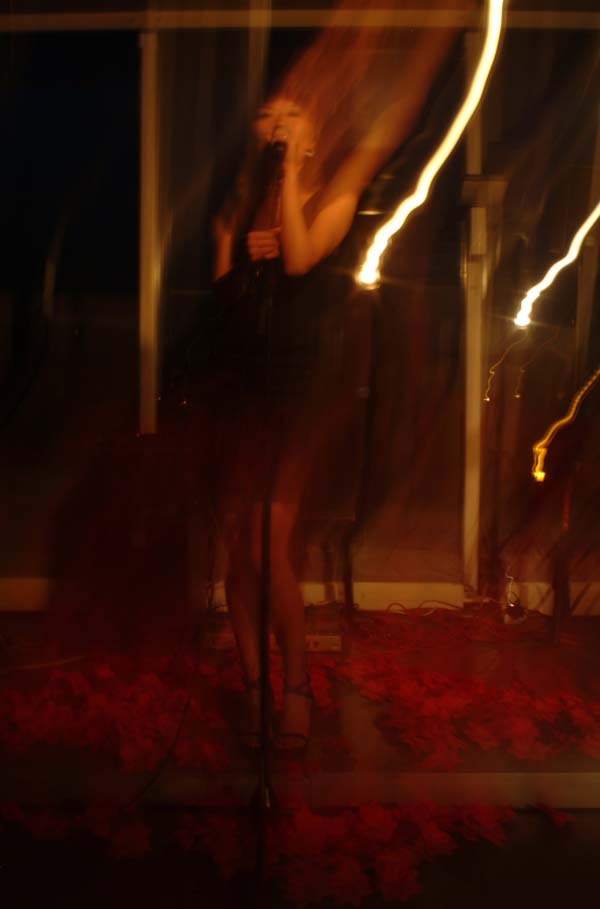Urumqi de Hsia-Fei Chang- Le regard d'Enrico Lunghi
Au Casino Luxembourg, nous avons montre le travail de l'artiste française d'origine taïwanaise Hsia-Fei Chang pour la première fois en 2004. Invitée a participer aux activités de la Shake Academy, elle avait réalisé, entre autres, un clip pour un groupe amateur de musiciens rock qu'elle avait rencontrer par hasard lors d'une fête de lycéens. Le film mettait en scène les quatre adolescents interprétant l'une de leur chansons et évoquait avec
tendresse les modèles et les rêves stéréotypés d'une jeunesse en autre d'elle-même. Ce n'était pas la première fois que Hsia-Fei Chang manifestait un intérêt pour la culture populaire et les destins subis, fussent-ils enviables. Elle avait auparavant fait éditer, grâce au budget alloue pour son propre projet artistique, la biographie véritable de Sandra, une jeune fille outragée des son enfance et a jamais brisée, et dont l'écriture décousue mais non privée de force n'aurait jamais trouve d'autre preneur.
Pour ON/OFF, une exposition de groupe ayant pour thème la lumière en mouvement, Hsia-Fei Chang a dessinée une série d'enseignes lumineuses et clignotantes recréant vaguement l'ambiance d'une métropole asiatique. A ceci près que les formes et les inscriptions des panneaux sont plutôt improbables: les unes ont un caractère jouissif et psychédélique, les autres se réfèrent a la littérature. Ainsi, un nuage bleu, sans aucune mention, côtoie une fraise et une glace, mais aussi une pilule (ecstasy?) et un rouleau de barbier décoré de figures de mangas et de feuilles de cannabis. Par ailleurs, Marcel Proust fait compagnie a Kawabata et a Murakami, deux grands écrivains japonais, en lettres soit latines, soit chinoises. Cet exotisme joyeux invite au voyage, fait rêver a une ville mettant les arts et la jeunesse a l'honneur: le titre de l'installation est Urumqi, agglomération située au fin fond de la Chine occidentale, paraissant inaccessible aussi bien aux Orientaux qu'aux Occidentaux.
Urumqi by hsia-Fei Chang- As seen by Enrico Lunghi
The Casino Luxembourg first showed the work of the French artist of Taiwanese origin, Hsia-Fei Chang, in 2004. Invited to take part in the Shake Academy activities, one of her projects was to make a clip for an amateur rock group that she had met by chance at a high-school party. The film showed the four teenagers performing one of their songs and was an affectionate look at the stereotypical thoughts and dreams of young people who are searching for themselves. This was not the first time that Hsia-Fei Chang had addressed pop culture and the paths it puts people on, enviable as they may be. She had prviously used a budget awarded to her to carry out her own art project to publish the real biography of Sandra, a young girl abused in childhood and forever broken, whose disjointed writing was not without its power and would otherwise never have been published.
For ON/OFF, a group show of the theme of light in motion, Hsia-Fei Chang designed a series of illuminated flashing signs that vaguely call to mind as Asian city-except that the shapes and writing on the signs are implausible: some are brilliant, psychedelic, while, the other indication, next to a trawberry and an ice cream cone, but also a pill (ecstasy?) and a barbier's pole decorated with manga figures and canabis leaves. Elsewhere, Marcel Proust keeps company with Kawabata and Murakami, two great Japanese writers, in script that is either Latin or Chinese. This joyful exoticism encourages people to travel and conjures up dreams of a city that is focused on art and youth: the title of the installation is Urumqi, a metropolis deep in the heart of western China that seems inaccessible to Easterners and Westerners alike.














































